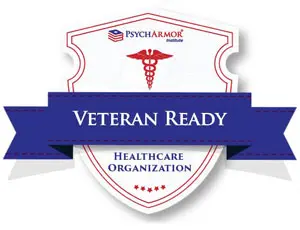“Curing” Addiction
Addiction is one of many medical conditions that can be effectively managed for a lifetime. But why isn’t there a cure for the disease? After all, if someone enters a rehabilitation facility, isn’t that supposed to “cure” them? Here’s the best way to think about it: similar to other chronic conditions, the right addiction treatment approach impacts future health tremendously.
A Brief History of Addiction Science
In just a few decades, what we understand about addiction has changed dramatically. It took some time before the medical community and society at large recognized alcohol use disorder (AUD) and substance use disorder (SUD) as illnesses instead of consequences of a moral failing, a behavior problem, and bad choices. Here’s a brief timeline:
- In 1956, the American Medical Association (AMA) first classified alcoholism as a chronic disease.
- By 1975, some insurance companies established coverage for addiction treatment, but the Mental Health Parity and Addiction Equity Act of 2008 broadened the scope of coverage by large group insurers. The Affordable Care Act expanded treatment policies more in 2010.
- In 1987, the AMA defined addiction as a disease.
- In 2011, the American Society of Addiction Medicine (ASAM) categorized addiction as a chronic brain disorder.
- In 2013, the American Psychiatric Association (APA)—which produces the Diagnostic and Statistical Manual of Mental Disorders (DSM-5)—updated categories previously titled substance abuse and substance dependence and merged them into one: substance use disorder, with three sub classifications—mild, moderate, and severe.
The ASAM defines addiction as “a treatable, chronic medical disease involving complex interactions among brain circuits, genetics, the environment, and an individual’s life experiences. People with addiction use substances or engage in behaviors that become compulsive and often continue despite harmful consequences. Prevention efforts and treatment approaches for addiction are generally as successful as those for other chronic diseases.”
But Why Isn’t There a Cure for Addiction?
Basically, because there’s simply not one risk factor for addiction, just like there isn’t a single reason for other chronic health conditions such as anxiety, depression, diabetes, heart disease, and kidney disease, to name a few. In some cases, genetics increases the possibility of addiction, mental health disorders, and chronic physical conditions. But researchers indicate both additional risk factors as well as preventative influences determine to what extent issues might develop.
In an article for Scientific American, physician Nora D. Volkow—the director of the National Institute on Drug Abuse at the National Institutes of Health—explained how critical it is for clinicians to understand the biopsychosocial framework, “which recognizes the complex interactions between biology, behavior, and environment.” This whole-person philosophy is the foundation for developing a continuum of care that reinforces how a brain disease like addiction should be addressed and treated.
“There are neurobiological substrates for everything we think, feel, and do; and the structure and function of the brain are shaped by environments and behaviors, as well as by genetics, hormones, age, and other biological factors,” Volkow stated. “It is the complex interactions among these factors that underlie disorders like addiction as well as the ability to recover from them.”
While there are basic methods common in the beginning of addiction rehabilitation treatment—a health evaluation, an assessment of needs, and perhaps detoxification for a short time—an individualized treatment plan is mandatory for successful long-term health management.
Individualized Addiction Treatment Is Most Effective
If two people in the same family have a genetic predisposition for diabetes, this doesn’t mean they’ll both contract it. Once again, this is due to their unique biopsychosocial framework. However, even if they do, they’ll still respond differently to medication, lifestyle factors, and other forms of treatment that help them control the disease for a lifetime.
Addiction treatment and reinforceable recovery practices are much the same. For example, although approximately 50 percent of AUD and SUD stems from genetics, twin studies indicate that environmental factors have a much greater influence over risk and prevention.
Volkow indicated in Scientific American that “we will never be able to address addiction without being able to talk about and address the myriad factors that contribute to it—biological, psychological, behavioral, societal, economic, etc. But viewing it as a treatable medical problem from which people can and do recover is crucial for enabling a public-health–focused response.”
Whole-Person Care at Seabrook
The promise of eliminating various diseases is always on the horizon. But for now, it’s critical to take both a scientific and holistic approach to addiction treatment that realistically provides essential management skills for life.
If you or someone you love is struggling with AUD or SUD, choose a rehab facility that has a whole-person care philosophy backed by evidence-based principles. You deserve to be seen, heard, and valued as a distinctive individual with your own needs and dreams. It’s our goal that one of Seabrook’s four New Jersey addiction centers can help. Ask us how.




